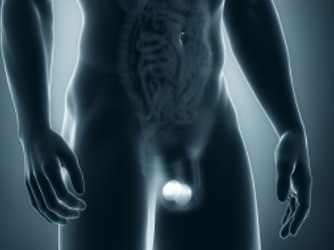 The testicle is surrounded by two layers of membrane called the tunica vaginalis. This usually has a thin film of fluid between the membrane layers. An accumulation of this clear fluid, which is caused by its poor absorption, is called a hydrocele.
The testicle is surrounded by two layers of membrane called the tunica vaginalis. This usually has a thin film of fluid between the membrane layers. An accumulation of this clear fluid, which is caused by its poor absorption, is called a hydrocele.
A secondary cause of a hydrocele can be inflammation.
Symptoms of a Hydrocele
A hydrocele usually (but not always) occurs on one side only – mainly in front of the testis, where it causes a lump that feels like a small, fluid filled balloon in the scrotum.
Smooth and varying greatly in size, hydroceles, are normally both painless and harmless, although larger hydroceles can be uncomfortable because of their size and weight.
Diagnosis
Symptoms of a hydrocele can easily be distinguished from testicular cancer, as a hydrocele is soft and squidgy, where a testicular cancer feels rigid and rough. As the fluid in a hydrocele is clear, light shone through it may be visible from the other side, however, the accumulation of fluids can be formally diagnosed through ultrasound.
Treatment
Hydroceles in newborn babies often disappear on their own during the first year or two. If the hydrocele in older males is not surgically removed, it may continue to grow. The hydrocele fluid can be drawn off, which is a less invasive procedure than surgical removal, but the hydrocele may return.
The injection of a solution following aspiration of the hydrocele fluid (called sclerotherapy), can increase success rates, but in many patients the hydrocele will recur.
The general recommendation is that a hydrocele should be surgically removed, in a procedure called hydrocelectomy. There are two surgical techniques available, dependent on the size of the hydrocele and the thickness of the membrane wall. Both aim to reduce the hydrocele sac so it does not reoccur.
A hydrocele will not generally affect fertility, although it could be indicative of other significant factors.
